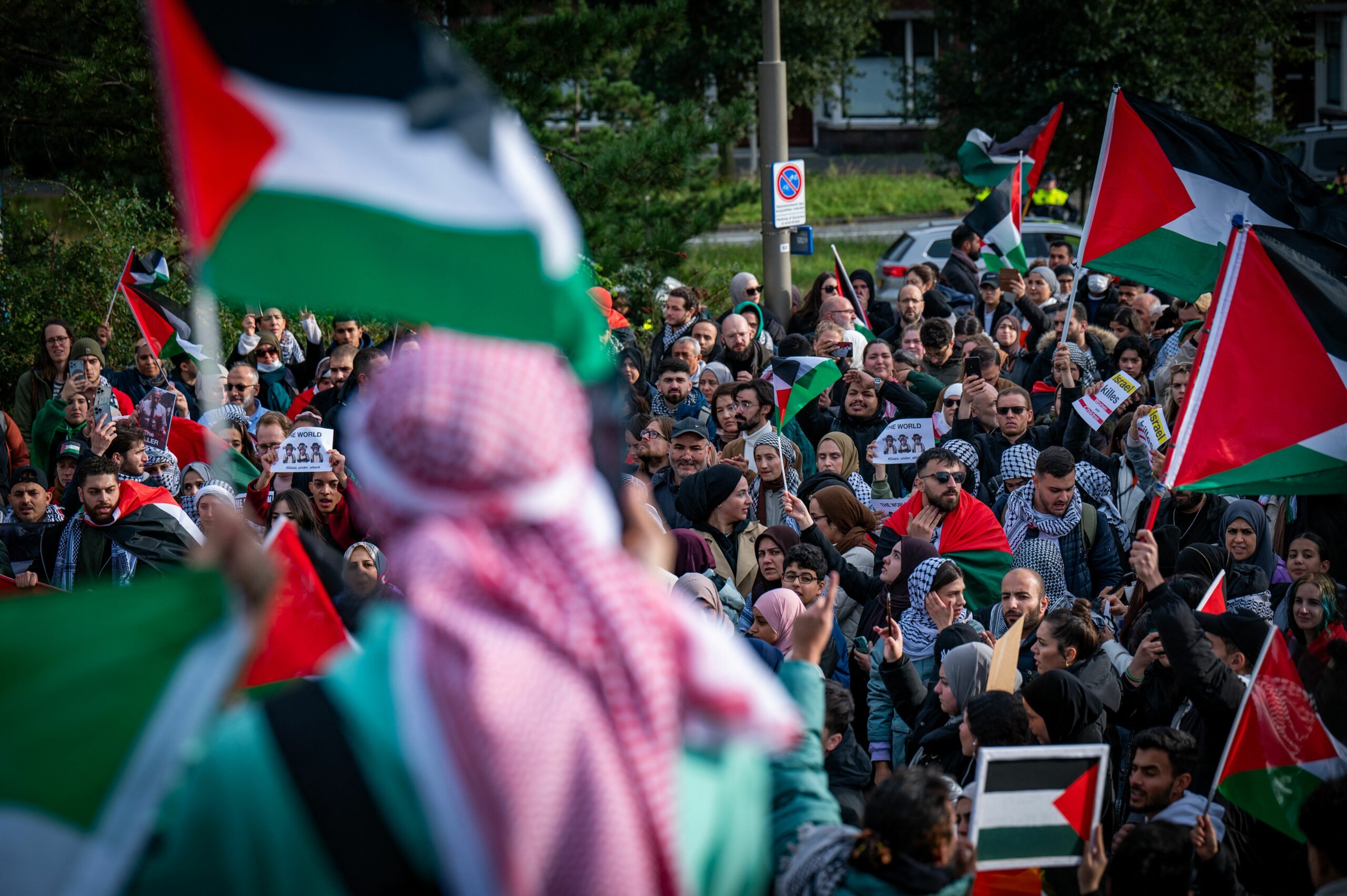Israel and Gaza militants have blamed each other for an explosion at a Gaza hospital on 17 October that killed several hundred people
This assessment was issued to clients of Dragonfly’s Security Intelligence & Analysis Service (SIAS) on 18 October 2023.
- We assess that the risk of a further escalation between Israel and regional armed groups is rising
- Irrespective of who was behind the strike, public anger across the region is almost certain to rise over the coming days, resulting in large and disruptive protests in many capital cities, especially after Friday prayers on 20 October
The risk of the conflict in Gaza spreading across the region is rising. This follows an explosion at a Gaza hospital that killed more than 450 people yesterday, 17 October. While both sides have blamed the other, regional actors, in particular Iran-backed proxies in Lebanon, Syria and Iraq have called for a global ‘day of rage’ today, 18 October. In light of this, we are raising our crisis risk level for Lebanon to severe. Public anger across the Middle East and North Africa is likely to rise in the coming days after several governments (including those with good relations with the US and Israel) accused Israel of the strike. We assess this will sustain a heightened risk of unrest and the terrorism threat across the Middle East and North Africa.
A blast at a hospital in Gaza City killed 471 Palestinians late on 17 October, according to the Hamas-run Gaza health ministry. Both Israel and Hamas have accused the other of being responsible. Regardless of who was behind it, since the incident last night public anger has grown throughout the Middle East, North Africa and globally, mainly through disruptive and sometimes violent protests.
Diplomacy faltering
The explosion at the hospital has dealt a serious blow to diplomatic efforts to address the conflict between Israel and Gaza. Most Arab countries, including those with diplomatic relations with Israel (like the UAE), have condemned the attack and blamed Israel. King Abdallah II of Jordan and Palestinian President Mahmoud Abbas, cancelled a planned meeting with US President Joe Biden scheduled for today. In our view, avenues for diplomacy to establish prolonged humanitarian relief or a ceasefire in Gaza are narrowing, potentially having severe regional implications, despite Israel agreeing to allow basic aid into Gaza from Egypt.
There are very limited options to temporarily ease the risk of further regional escalation, in our view. A delay in the Israeli ground military operation and a truce allowing humanitarian aid in Gaza are among these. Still, these would only probably slow down regional involvement rather than completely halt it. This is mainly because Israel seems intent on degrading and ultimately destroying Hamas’ capabilities and chain of command, which would probably take at least several weeks and result in further civilian casualties.
Greater regional involvement likely now
A greater involvement of regional actors, particularly Iran-backed proxies in Iraq, Lebanon and Syria, is now likely in light of the incident in Gaza. We previously assessed it as a reasonable possibility. This is mainly because one of our key indicators for escalation – an elevated number of mass civilian casualties – has now been met. Nevertheless, we continue to assess that their role would probably be incremental and dependent on Israeli ongoing military operations in Gaza. The involvement of these groups would lead to an increase in bouts of shelling and other attacks by Hezbollah on the northern border of Israel, shelling by Iran-aligned groups in Syria into the Golan Heights, rocket attacks on US interests in Iraq by Iran-backed groups and Iranian cyber operations on Israeli interests.
There is growing concern among our clients around Hezbollah’s involvement in the conflict and its implications for Lebanon. The US Embassy in Beirut on 17 October advised its citizens not to travel to Lebanon. And the Saudi authorities ‘[called] on all citizens […] to leave Lebanese territory immediately’ in a statement today, 18 October. Should a major conflict break out, this would involve primarily Hezbollah in Lebanon and Iran-proxies in Syria targeting the north of Israel and the Golan Heights respectively with intense shelling and infiltration operations.
The situation is liable to further escalate at very short notice. At the moment, domestic considerations of pro-Iran groups appear to be far more important than their desire to attack Israel, in our assessment. However, the high death toll of the explosion in Gaza provides these actors with the opportunity to gain popular backing for further involvement in the conflict. Hezbollah has called for a ‘day of rage’ today against Israel following the blast in Gaza. There have been local media reports of mortar shelling and small arms fire on both sides throughout the day. Several hundred people also participated in violent protests outside the US Embassy in Beirut last night and today in anger at the hospital blast.
Armed attacks against US interests in Iraq probable
Armed attacks against US interests in Iraq are also probable in the coming days. This includes rocket attacks targeting the US Embassy in Baghdad and military sites near Erbil airport. In a sign of this, the US military said today, 18 October that it ‘thwarted’ a drone attack this morning against its forces at the Al-Asad base in Iraq (approximately 160 km northwest of Baghdad). No group has yet claimed the incident, but pro-Iran militias across Iraq in recent days have warned of such attacks if Israel does not stop its bombardment of Gaza. Further incidents over the coming days are highly likely to be motivated by reports that Israel was behind the hospital attack in Gaza, regardless of any evidence suggesting otherwise.
Terrorism threat heightened
We also warn that the terrorism threat related to the conflict globally will probably continue to be heightened over the coming days. The Gaza hospital incident has a high potential to motivate would-be lone actors to carry out attacks. Based on the type of incidents since the start of the conflict, these are more likely in Europe and North America than in the Middle East and North Africa.
We continue to assess that attacks would either be by jihadist sympathisers or by far-right individuals targeting Muslims or those perceived to be overtly supporting Palestine. Germany also warned of a heightened terrorism threat in Bahrain and Saudi Arabia after the incident, but we have not seen any specific calls for action there.
Widespread public anger in Palestine and the region
Large and violent protests in the West Bank and East Jerusalem are also likely in the coming days. The risk of unrest is likely to be particularly high after Friday prayers on 20 October. These are highly likely to become violent with Israeli police (in Jerusalem) and Palestinian police (in the West Bank) violently dispersing gatherings with tear gas and batons. Several thousand Palestinians protested across the West Bank and in Jerusalem after the hospital explosion last night. Based on the chants at these protests, Palestinians are squarely blaming Israel for the attack, but also the Palestinian Authority for its inaction.
Public anger against Israel across the Middle East and North Africa is also almost certain to rise and result in more frequent and violent protests over the coming days. Based on regional Palestinian solidarity protests since the start of the conflict, these will mostly be outside US, Israeli and other European (namely the UK, German and French) diplomatic missions. Our monitoring of regional news and social media shows that activists aligned with Palestine are convinced that Israel is to blame for the attack. The attached map indicates the locations of US and Israeli diplomatic missions and Jewish synagogues in the region.
Protests in Amman, Baghdad, Beirut and Istanbul are likely to be the most violent and disruptive, based on protests over the same issue so far this week. In the immediate aftermath of the hospital attack on 18 October, several hundred people in each of these cities gathered outside US diplomatic missions, and Israeli ones (in Istanbul and Amman). Protesters have returned to the streets today. While we assess that security forces will be able to prevent widespread unrest by using tear gas and water cannons, participants are very likely to violently target embassies and consulates by throwing rocks, burning tyres, and attempting to breach their gates.
We anticipate additional peaceful protests elsewhere in the region in the coming days, with the largest also taking place after this week’s Friday prayers. Since the incident last night, we have seen calls for protests in Morocco, Tunisia and Algeria. Based on events last week, several thousand people are likely to participate in Algiers, Tunis, and Rabat.
Smaller protests are also probable in Manama, Cairo (outside the site of the old Israeli Embassy), and Doha. In a sign of this, there are Israeli press reports suggesting the Israeli embassies in Cairo and Rabat have been evacuated as a precaution. Spontaneous protests regionwide are also probable in smaller cities outside of mosques after noon prayers. There were similar demonstrations in Sfax in Tunisia, Marrakesh in Morocco, and Alexandria in Egypt last week. We are also monitoring pro-Palestine and pro-Israel protests globally over the coming days.
Image: Protestors hold Palestinian flags during a demonstration in front of the International Criminal Court in the Hague on 18 October 2023. Photo by Josh Walet / ANP / AFP via Getty Images.




